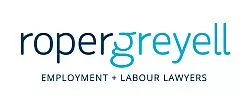On the morning of March 18, 2020, we published an information bulletin to provide information, and address some of the most common questions faced by employers regarding the COVID-19 pandemic. Please find this bulletin here: COVID-19 Update - March 18, 2020
The purpose of this March 19, 2020 bulletin is to provide additional COVID-19 information to employers regarding Employment Insurance benefits, the federal stimulus package of $82 billion, and new provincial job-protected leaves of absence.
I. EI Benefits for COVID-19
Currently, there are two types of Employment Insurance benefits potentially available to employees affected by COVID-19 and the related economic impact under the Employment Insurance Act: EI Sickness Benefits and EI Regular Benefits. For either EI Benefit, Employees must still work the pre-requisite number of insurable hours prior accessing the respective benefit.
Employers may additionally wish to consider federal top-up and work-sharing programs.
EI Sickness Benefits (up to 15 weeks)
Employees may be eligible to claim EI Sickness benefits when they are unable to work because they have either been diagnosed with COVID-19 (or are otherwise unable to work for a medical reason) or unable to work because they have been directed to self-quarantine. Employment Insurance (EI) sickness benefits provide up to 15 weeks of income replacement (55% of earnings up to a maximum of $573 per week).
In response to the COVID-19 pandemic, the Federal Government has waived the standard one-week EI waiting period as well as the requirement for documentary evidence of sickness (i.e., a medical certificate signed by a qualified medical profession), for individuals directed to self-quarantine. In addition, Service Canada has confirmed that individuals who cannot complete a claim for EI sickness benefits due to quarantine may apply later and have their EI claim backdated to cover the period of delay.
Further information about EI sickness benefits, including about the application process and qualification requirements, can be found on the Service Canada EI Sickness Benefits website.
EI Regular Benefits
EI Regular benefits provide between 14 and 45 weeks' of income replacement (55% of earnings up to a maximum of $573 per week), depending on unemployment rates in the applicable region and the number of insurable hours an employee has worked in the previous 52 weeks or since his or her last claim. These benefits are available to individuals who lose their jobs through no fault of their own (for example, due to shortage of work or mass workforce reductions, including due to the COVID-19 pandemic).
As of the date of this bulletin, no changes have been announced to EI Regular benefits. What this means, among other things, is that the one-week waiting period continues to apply. Further information about EI Regular benefits can be found on the Service Canada EI Regular Benefits website.
EI Top-Up
Employers may establish a Supplemental Unemployment Benefit (SUB) plan to supplement EI for employees who are unemployed due to reasons including a temporary stoppage of work, illness, or quarantine.
In essence, a SUB plan is an employer-paid EI top up.
Payments from SUB plans that are registered with Service Canada are not considered as earnings and are not deducted from EI benefits (pursuant to subsection 37(1) of the EI Regulations). In other words, to shelter the EI payments, the SUB plan must be registered with Service Canada. Payments made by an unregistered SUB plan will be considered "earnings" and will offset the employee's EI payments. Please note that to be registered with Service Canada, a SUB plan must meet a number of specific requirements, the specifics of which are found in Service Canada's Guide for Employers Offering Supplemental Unemployment Benefits to Their Employees.
Work Sharing
Private sector employers may also wish to consider applying for the Federal Work-Sharing Program, which is an adjustment program designed to help employers and employees avoid layoffs when there is a temporary reduction in the normal level of business activity that is beyond the control of the employer. The measure provides income support to employees eligible for EI benefits who work a temporarily reduced work week while their employer recovers.
In response to the COVID-19 pandemic, the maximum duration of the Work-Sharing Program period for affected employers has been extended from 38 weeks to 76 weeks. Please note that the process of applying for the Work-Sharing Program can be a complex one and must be made at least 30 days in advance of the effective date. Employers wishing to utilize this program are therefore encouraged to begin the application process as soon as practicable. Further details can be found in Service Canada's Work-Sharing Program Guide.
II. Federal Stimulus Package of $82 Billion
On March 18, 2020, the federal government announced an $82 billion stimulus package to protect workers, businesses, and the Canadian economy during the COVID-19 public health emergency: (i) $27 billion in direct support to individuals and businesses (equivalent to more than 1% of GDP); and (ii) deferral of $55 billion in tax revenue (meaning approximately 3% of GDP will be left in economy). The Prime Minister announced several of the measures in an address to the nation. Finance Minister Bill Morneau then gave a press conference in which he provided additional details about the federal government's plans. The Department of Finance also published a document titled Canada's COVID-19 Economic Response Plan: Support for Canadians and Businesses which is hyperlinked below. Note that these measures were described by the Finance Minister as the "first phase of Canada's COVID-19 economic response plan" and it was made clear that additional measures would be announced as necessary.
As an important preliminary point, we want to caution that much of what was announced is still in development, unless otherwise clearly stated. In an interview with Global News TV at around 8:45 AM PST on March 19, 2020, the Finance Minister indicated that legislation to facilitate many of the measures announced was being actively worked on. He indicated that this legislation could be tabled as early as the weekend of March 21, 2020 or early the following week. In response to a question about when Canadians could expect "cheques in the mail", he did not provide a firm timeline but appeared to indicate that a timeline of around three weeks for the system changes that are required was possible.
Emergency Care Benefit
The federal government is creating a new Emergency Care Benefit that will provide individuals with bi-weekly payments of up to $900 for up to 15 weeks. This benefit is expected to be made available in April 2020. This "flat-payment Benefit" will be administered through the Canada Revenue Agency.
The Department of Finance stated, in its written publication titled Canada's COVID-19 Economic Response Plan: Support for Canadians and Businesses that the Emergency Care Benefit will provide income support to: (i) workers, including the self-employed, who are sick or in quarantine with COVID-19 but do not qualify for EI sickness benefits; (ii) workers, including the self-employed, who are taking care of a family member who is sick with COVID-19, but do not qualify for EI sickness benefits; (iii) parents with children who require care or supervision due to school closures, and are unable to earn employment income, irrespective of whether they qualify for EI or not.
To see the full article click here
The content of this article is intended to provide a general guide to the subject matter. Specialist advice should be sought about your specific circumstances.




